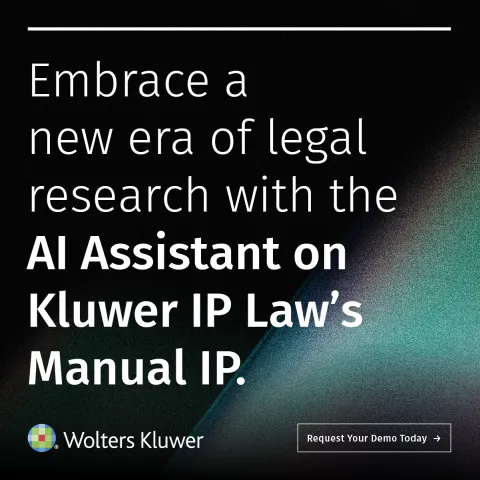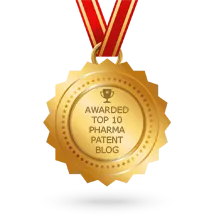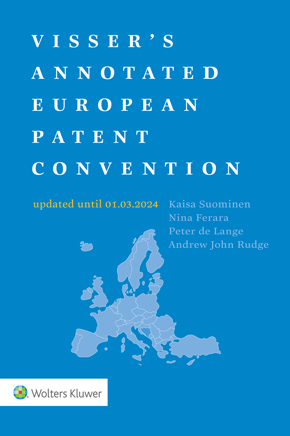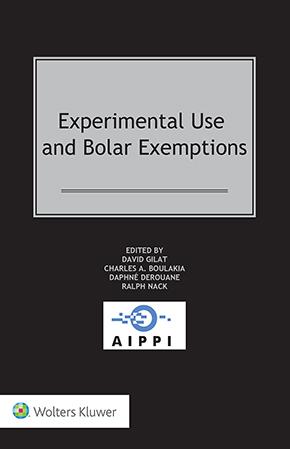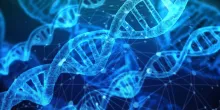EPO EBA 2 July 2025, G 1/23 – Non-Reproducibility of Available Products Is No Stopper To Qualify As Prior Art – Part 2
September 24, 2025
In patent law, the concept of “prior art” or “state of the art” describes the universe of information which existed and was made available to the public by means of a written or oral description, by use, or in any other way, at the date of filing of a patent or at the priority date, as the case may be. When it comes to a public prior usage (i.e. an existing product), the issue arises to determine whether such product may qualify as prior art disclosing for the person skilled in the art the claimed features of the invention. With a quite philosophical approach about existence, the EBA has recently provided some reflections about public prior usage.
Factual and legal background of the case
In its decision G 1/92, the EBA set out a test to determine what has been made “available to the public”, requiring to meet three cumulative criteria: (i) the product should be available to the public (i.e. put on the market), (ii) the product can be analyzed by the person skilled in the art, and (iii) the product can be reproduced by the person skilled in the art without undue burden.
In the case referred to the EBA in G1/23, the patent in suit related to an encapsulating material for solar cells. The appeal was filed against the decision of the Opposition Division (OD), which rejected the opposition. It was disputed that the closest prior art was the commercially available product “ENGAGE® 8400” sold before the priority date. The OD considered that such product did not qualify as prior art because the person skilled in the art would not have been able to reproduce it without undue burden. Indeed, the exact composition of the product and its manufacturing process were not disclosed. In other words, the underlying issue revolved around whether a specific “commercially available” polymer product put on the market for the manufacture of solar cells could qualify as prior art without fulfilling the reproducibility requirement, in light of G 1/92.
As a result, the referring decision submitted 3 questions to the EBA to clarify the teaching of G 1/92, as follows:
1. The first question related to the qualification as prior art of a product without fulfilling criteria (ii) and (iii) of G 1/92 referred to above:
Is a product put on the market before the date of filing of a European patent application to be excluded from the state of the art within the meaning of Article 54(2) EPC for the sole reason that its composition or internal structure could not be analysed and reproduced without undue burden by the skilled person before that date?
2. The second question related to the qualification as prior art of the technical information relating to such product:
If the answer to question 1 is no, is technical information about said product which was made available to the public before the filing date (e.g. by publication of technical brochure, non-patent or patent literature) state of the art within the meaning of Article 54(2) EPC, irrespective of whether the composition or internal structure of the product could be analysed and reproduced without undue burden by the skilled person before that date?
3. The third question related to the level of burden of criteria (ii) and (iii) of G 1/92:
If the answer to question 1 is yes or the answer to question 2 is no, which criteria are to be applied in order to determine whether or not the composition or internal structure of the product could be analysed and reproduced without undue burden within the meaning of opinion G 1/92? In particular, is it required that the composition and internal structure of the product be fully analysable and identically reproducible?
Decision
The EBA ruling is quite detailed. It acknowledges that defining the boundaries of the state of the art is a question of law of fundamental importance and that the case law is not uniform.
Regarding Question 1, the EBA held that the question should be answered in the negative and took the view that there was no reason to consider that a product put on the market should be excluded from belonging to the state of the art solely because its composition or structure could not be analyzed and reproduced by the person skilled in the art before that date.
As a preliminary remark, the EBA indicated that a product put on the market shall apply to all kind of products (whether man-made or naturally occurring). The EBA further considered that reproducibility, a “decisive criterion”, related to the preparation to obtain, including by way of manufacturing, a tangible copy of a product (physically and technically equivalent to the original product). The EBA defined it as a “reproduction by a different route”, as opposed to taking the product as readily put and available on the market. According to the EBA, reproduction must be based on the common general knowledge used by the person skilled in the art and it shall be assumed that reproduction does not involve an “undue burden”, when it is made on that basis.
The large part of the EBA’s reasoning focused on the reproducibility requirement and considered that, as previously interpreted, it establishes a legal fiction that leads to absurd results. In particular, two lines of interpretation are possible: if not reproducible, either the product itself or only the composition thereof is not part of the state of the art.
The EBA held that it could not follow the first line of interpretation on the ground that excluding non-reproducible products from the state of the art would exclude them from the common general knowledge, which includes non-reproducible starting materials (e.g. every chemical element, or atoms). The EBA stated that “there are no products on earth that are in the end not based on materials that themselves cannot be reproduced” and, therefore, such interpretation would contradict the necessity for the person skilled in the art to rely on readily available materials, when attempting to reproduce any type of disclosure. The skilled person could not exist without such non-reproducible products. At some point, “the requirement of reproducibility of the state of the art, by excluding the mere obtaining of the product from the market or taking it from nature, would lead to the result that no material in the physical world would belong to the state of the art” and, therefore, the entire state of the art would be removed.
It also rejected the second line of interpretation. According to the EBA, it cannot be held that a certain property (e.g. composition) of a physically and legally existing product does not exist and the person skilled in the art would disregard such property because it is unable to reproduce it, whilst such property could be analyzed or even be known to exist without analysis. At some point, the person skilled in the art would have to turn to a non-reproducible composition, even an equivalent, coming from a natural source and to be selected on the basis of their desired properties (which implies that they are known). Otherwise, there would be no material left for the person skilled in the art.
Therefore, the correct interpretation was that the state of the art should include the product itself, obtained from the market in its readily available form, irrespective of its reproducibility. As a result, the EBA decided that the reproducibility shall be understood as the “ability of the skilled person to obtain and possess the physical product” and that this condition, as set out by the decision G 1/92, was redundant with the analysability requirement. A proper reading should then remove the reproducibility requirement to leave only the analysability one as “all analysable properties of the product put on the market will belong to the state of the art, i.e. they will represent technical information that the skilled person is aware of and will consider relying on when looking at technical solutions”. The question that follows (and is unanswered by the EBA) is whether there are legal limits to the analysis of a product, whether it is a real analysis (e.g. experimental results provided in proceedings) or hypothetical analysis (i.e. experiments that could have been carried out and have provided relevant properties of the product).
Regarding Question 2, the EBA ruled in the affirmative and held that technical information about such a product which was made available to the public before the filing date forms part of the state of the art within the meaning of Article 54(2) EPC, irrespective of whether the skilled person could analyse and reproduce the product and its composition or internal structure before that date.
According to the EBA, the fact that the product disappeared from the market has no impact on the state of the art status of the technical information about it. As an abstract and intellectual exercise, such technical teaching derives from a physical analysis of the available product and, therefore, it shall remain part of the state of the art, simply because it had been “accessible” to the person skilled in the art at some point in time. In other words, if the product is available for analysis, the results of such an analysis shall be deemed to become public and form part of the state of the art as well.
Finally, given the answers to Questions 1 and 2, the EBA found that Question 3 was moot and did not require an answer.
Practical impacts
The scope of what counts as prior art has been significantly broadened by the EBA. Almost in a metaphysical way, the EBA has held that any product or information, even temporarily published (e.g. an Internet disclosure), exists in this world once and for all. Thus, if a product is improved, it will constitute another prior art for the future, but does not supplant the first version which is and will ever remain a prior art as soon as it has existed in its own time.
Therefore, patent applicants should conduct thorough (and burdensome) prior art searches and constant market watch to include commercially available products (anywhere in the world) even if their compositions are complex and not fully disclosed, and the related (merely accessible) technical information, regardless of whether the product can be reproduced, is modified, or eventually disappears from the market. Likewise, applicants should pay attention to confidentiality measures, particularly with regards to samples, brochures, tests, prototypes, before launching any product; otherwise, a product put on the market could constitute a prior art. As a result, it is advisable to file a patent application before such commercialization and taking any risk of prior public disclosure.
In litigation strategies, this should also give rise to more revocation claims on the ground of prior usages to challenge novelty or inventive step. By using such an extreme interpretation that all products on earth rely, at some level, on non-reproducible starting materials and therefore that non-reproducible products put on the market cannot be excluded from the state of the art, perhaps the EBA shows here an intention to open up the way for more validity challenges and clear registers.
That being said, the major challenge that will be raised by a constantly evolving world in the field of technology, is the access and retrieval of such existing product prior to the filing or priority date. Consequently, it seems clear that the debate in a dispute will not deal with the qualification of a product as prior art anymore, but with the proof of such prior art, and particularly its composition or properties. The EBA considers, in that respect, that “reconstructing the properties of the product […] is a practical legal problem of proof for lawyers”, amusingly noting that “for an attorney there are no limits to the efforts it wishes to invest in the matter”. However, lawyers, however good they may be, are not magicians and cannot resurrect objects that are gone. The problem is thus a matter of proof and evidence as to what, when and how the technical teaching that has disappeared became part of the state of the art.
The rejection of the reproducibility requirement, thereby leaving alone the analysability requirement, together with the issue of burden of proof, may bring about an increase of the use of experts and consultants to provide opinions and analyses, which may increase costs for litigants as well, particularly in relation to complex products, such as in the pharmaceutical, chemical or cosmetic fields. It is noteworthy that the level of “undue burden” of such analysis has not been decided by the EBA. Then the question remains as to what properties should become state of the art: should it include only those properties determined by using standard methods or also those determined by a technically feasible analysis, however technically and/or financially excessive?
At the time of writing, it seems that the Unified Patent Court (UPC) has not had to deal with this particular issue yet. It will be therefore interesting to monitor the consistency of the validity assessment that will be practised by the UPC with respect to prior usages.
You may also like




